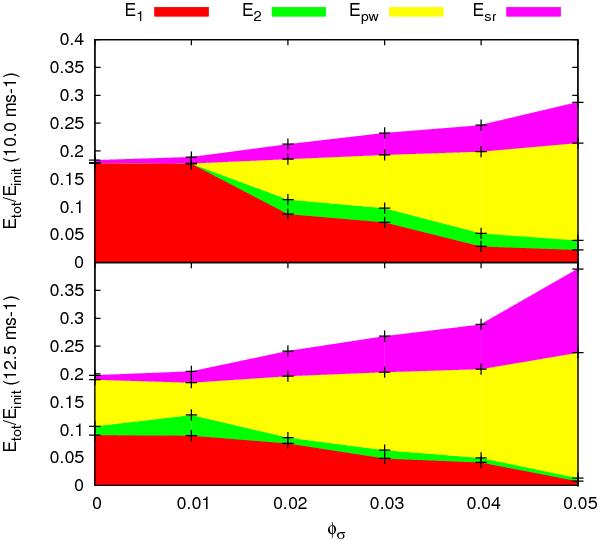Fig. 5

The energy of each population for increasing inhomogeneity parameter φσ and collision velocity v0 = 10 m s-1 (top) and v0 = 12.5 m s-1 (bottom). The energy of each population is the sum of translational, rotational and vibrational energy and normalised by the initial kinetic energy Einit. The two latter energy contributions are negligible for the head-on collisions presented here. Owing to the strong correlation with mass, this diagram follows a similar trend to Fig. 4. The energy contributions are divided up into E1, E2, Epw, and Esr for the largest and second largest fragment, the power-law and sub-resolution population, respectively. In both velocity cases, both E1 and E2 decrease with increasing φσ. In contrast, Epw and Esr increase. In particular, the high fraction of kinetic energy stored in the sub-resolution population is remarkable.
Current usage metrics show cumulative count of Article Views (full-text article views including HTML views, PDF and ePub downloads, according to the available data) and Abstracts Views on Vision4Press platform.
Data correspond to usage on the plateform after 2015. The current usage metrics is available 48-96 hours after online publication and is updated daily on week days.
Initial download of the metrics may take a while.


